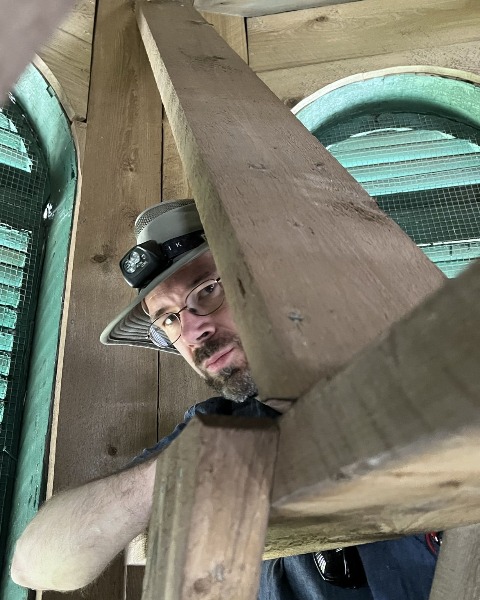French
Track 2/Volet 2
(CS2.1) Seismic Rehabilitation of historic buildings
Friday, November 15, 2024
9:00 AM - 9:20 AM EST

Jérôme Bédard, Ing., Associé écologique LEED®
Chargé de projet
Tetra Tech, Canada
Tom Morrison, PEng, PhD, CAHP, APT-RP, CSCE, ISCARSAH
Principal
Heritage Standing Inc., Canada
Speaker(s)
Session Chair(s)
Seismic retrofitting of existing buildings requires adaptation to current standards, which presents several technical challenges for heritage professionals. The topics covered in this presentation will be supported by concrete examples of current and completed projects. In Quebec, the Code de construction du Québec (CCQ) prescribes the requirements for existing buildings undergoing transformation, maintenance or repair work. The CCQ sets out various criteria for seismic retrofitting, including a reduction in the building's seismic capacity, a modification to the lateral load resistance system, an integral extension to the existing structure, or an increase in seismic mass. The National Building Code (NBC) also provides guidance on assessing the structural resistance and upgrading the performance of existing buildings to meet the objective. The major increase in seismic loads associated with the application of the 2020 NBC amplifies the importance of the seismic retrofit strategies that need to be applied to bring the building up to the threshold targeted by the regulatory framework. The identification of existing lateral load resistance systems is paramount to assess the impact of transformations on the building. The nature of the foundations (caisson piles, rubble walls), the construction method (infill walls, solid walls) and the geometric characteristics (confinement of infill walls, openings, spans) must be considered to determine the components involved in taking up seismic forces. Once these components have been defined, in situ tests are carried out on existing materials, mainly masonry, to characterize actual resistances. These tests, combined with exploratory surveys and penetrations to observe the condition of materials and assemblies between existing structural components, aim to establish precisely the capacity of the existing building to resist seismic loads. For masonry, for example, different modes of failure are analyzed according to the construction method identified. According to our analyses, it is very common to find that the lateral load resistance of existing buildings is well below the levels required by regulatory requirements, and that seismic retrofitting is required. Seismic retrofitting methods for heritage buildings should first and foremost focus on component conservation. The seismic reinforcements added to the building must be compatible with the rigidity expected of a masonry building, while incorporating the objectives of modern seismic calculation, notably ductility. Case studies for various project will be presented.
Learning Objectives:
- Understand the regulatory and standards framework in force in Quebec (and Canada).
- Identify the components of a building that contribute to the absorption of lateral loads and their roles in this respect.
- Interpret the main possible modes of failure for unarmed masonry according to building construction methods.
- Be able to distinguish between the different seismic rehabilitation approaches applicable to a project.

.jpg)
.jpg)


